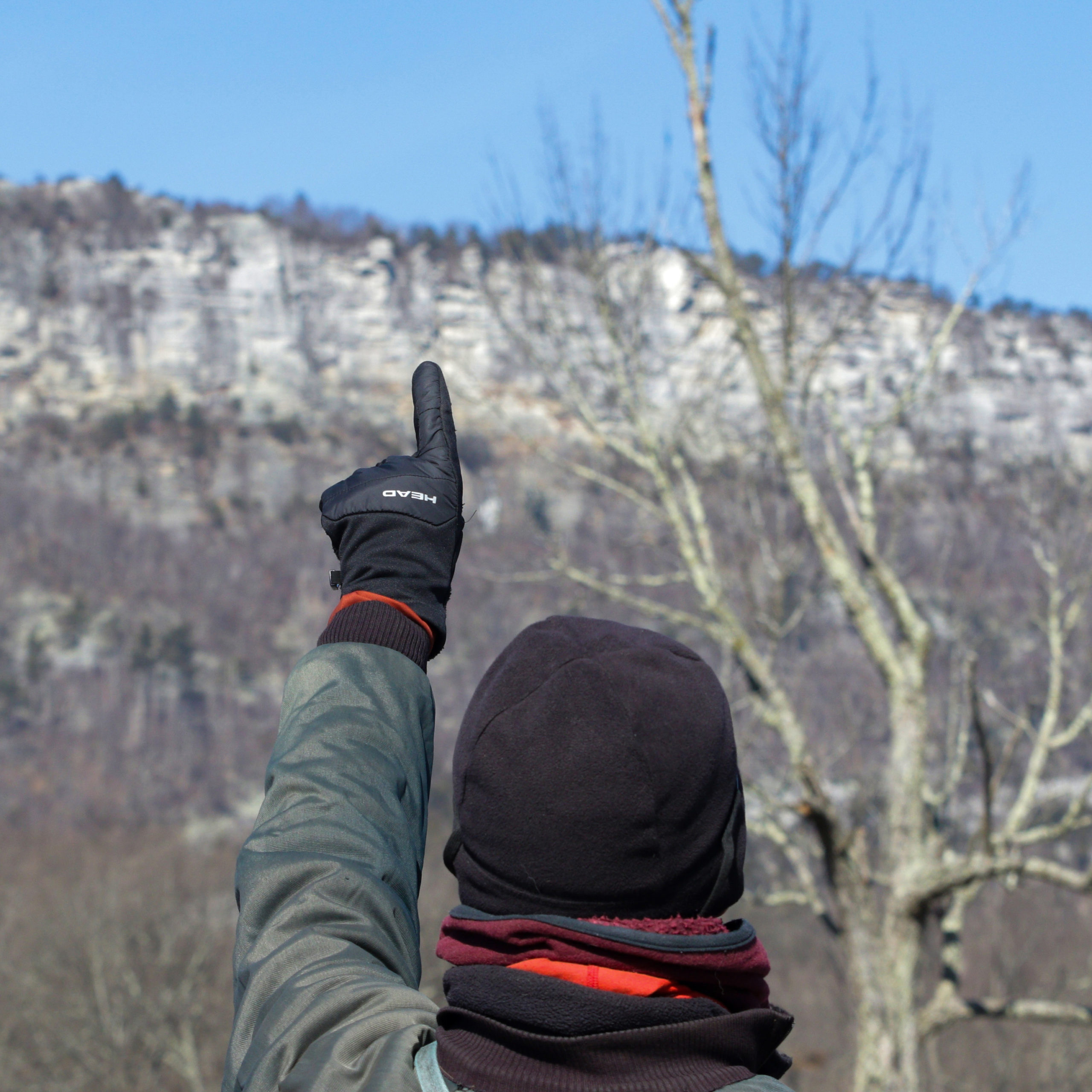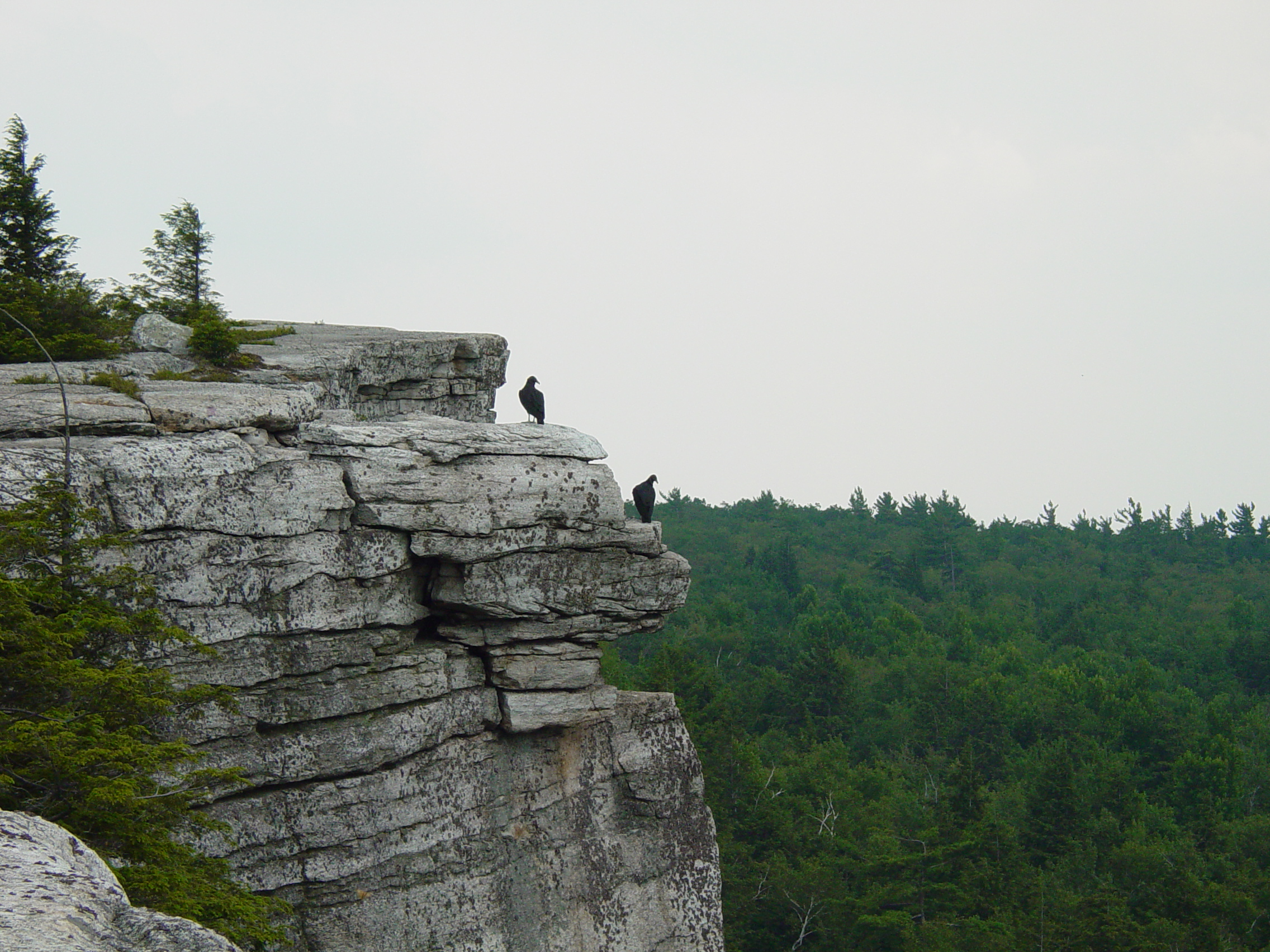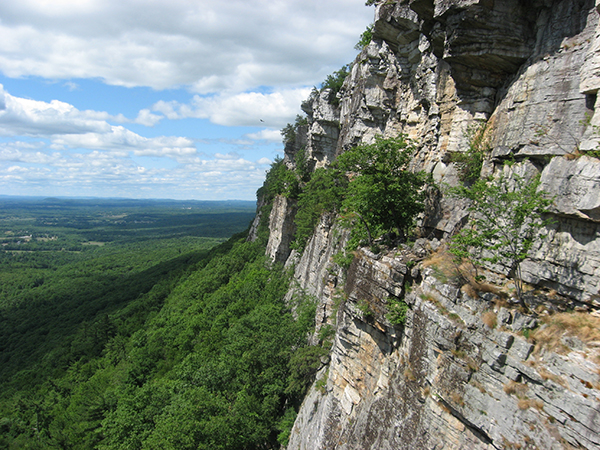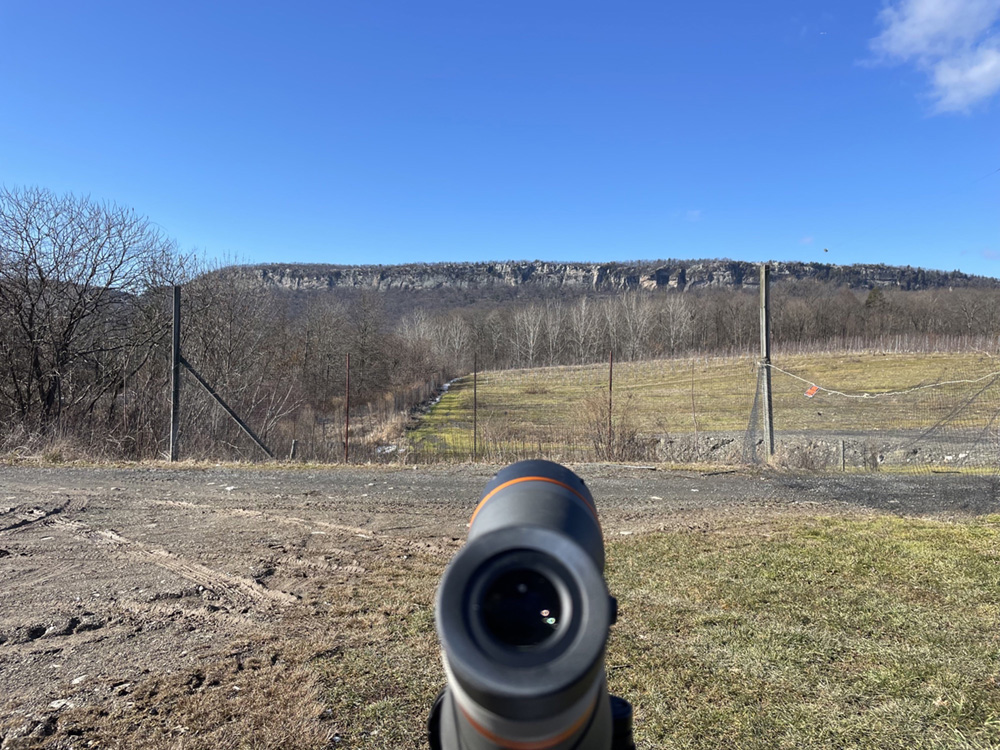2025 PEREGRINE WATCH SEASON
Based on our experience, current scientific research and raptor protection strategies of conservation partners, the Preserve will continue applying a responsive management approach during the early breeding season to optimize successful eyrie (cliff nest) site selection. Through our Peregrine Watch program, we have confirmed breeding activity in the Trapps. Earlier this spring, the falcons’ breeding attempts were unsuccessful, extending the timeline for closure adjustments. They have now settled on a new eyrie location.
As a result, we are revising our temporary climbing and bouldering closures as follows effective Thursday, May 8th:
- Trapps Climbing – No climbing from and including Thin Slabs (5.7) to and including Lakatakissima (5.10b).
- Trapps Bouldering – No bouldering from and including Atlas (V10) to and including Mini (V1). Exception: Andrew Boulder and Slug’s Life Boulder problems starting from Undercliff Carriage Road will be open. To minimize noise close to the eyrie, at any given time no more than 10 people can be present at this location.
Please note that if consistent defensive behaviors are displayed near the closure boundary, these closure parameters may require adjustment. We thank our dedicated Conservation Science staff and Peregrine Watch participants for their diligent observations of the peregrine sites and the climbing community for their patience and support of our efforts to protect these amazing falcons.
Click here to learn more about peregrines on the Shawangunk Ridge.
Peregrine Watch Observations
4.29.25 – Preserve Peregrine Cam
Tune in to see some peregrine falcon action on the Shawangunk Ridge!
4.22.25 – Preserve Peregrine Cam
Blink and you might miss it! The peregrine falcon is renowned for its incredible speed, particularly during its hunting stoop, which is a controlled dive where the bird plunges from great heights to capture prey in the air, reaching speeds of over 200 mph.

4.17.25 – Peregrine Watch: Observation at the Trapps
A pair of peregrine falcons have been observed perching on an eyrie in the Shawangunk Ridge. Peregrine falcon perching behavior signifies several things, including hunting, courtship and general rest. They often perch on high vantage points to scan for prey, and during the breeding season, perching together indicates potential mating pairs.

4.15.25 – Peregrine Watch: Observation at the Trapps
Our Peregrine Watch volunteers recently observed a female peregrine falcon dive-bombing vultures, likely in defense of a favored perching spot. Both species frequent the cliffs high above the treetops, which often brings them into close proximity. These overlapping territories can lead to dramatic interactions, as peregrine falcons are highly territorial. Our volunteers also watch for vultures, as their presence often signals the potential for territorial displays from peregrine falcons.
4.8.25 – Preserve Peregrine Cam
Tune in to hear from some locals on the Shawangunk Ridge! Peregrine falcons vocalize for various reasons to communicate and coordinate behaviors like defense of territory, breeding and hunting food.

4.4.25 – Peregrine Watch: Observation at the Trapps
Love is in the air! Possible copulation was observed in the Trapps by Associate Director of Conservation Science & Research Megan Napoli. Peregrine Activity occurred regularly throughout the morning observation where a male and female peregrine falcon were seen flying around and checking out multiple cracks in the rock faces, potentially seeking out an eyrie.

3.11.25 – Peregrine Watch: Observation at the Trapps
Two peregrine falcons were seen flying and then later perched on an eyrie in the Trapps by Associate Director of Conservation Science & Research Megan Napoli.
5.14.24 – Preserve Peregrine Cam: Footage shows a peregrine falcon vocalizing in the Shawangunk Ridge.
This peregrine is “ee-chupping.” Ee-chup is a peregrine-to-peregrine vocalization. Because this sounds like a “whisper call” or a softly vocalized call, it’s likely these peregrines are communicating in a friendly way to each other. Perhaps the peregrine staying in the eyrie is communicating to their partner something along the lines of, “have a nice flight” or “bring me back a tasty morsel!”
4.8.24 – Preserve Peregrine Cam: Two peregrine falcons are seen feeding on a northern flicker in the Shawangunk Ridge.
3.14.24 – Preserve Peregrine Cam: Tune in with your sound on for some peregrine falcon calls! This footage shows a pair of peregrine falcons on an eyrie in the Shawangunk Ridge talking to one another. Falcons will use various different calls to signal their presence to potential mates, communicate needs to their partners or to establish territory.
2.5.24 – Preserve Peregrine Cam: A peregrine falcon takes flight off an eyrie on the Shawangunk Ridge. Did you know the peregrine falcon is considered the fastest member of the animal kingdom? Peregrine falcons are very fast fliers, reaching speeds up to 69 mph in direct pursuit of prey and 200 mph when hunting from high above! These amazing high-speed dives are called hunting stoops.
1.16.24 – Preserve Peregrine Cam: A peregrine falcon preening their feathers to keep them clean.
